Some drivers fail to see the appeal of front wheel drive. Taking a preference is understandable, but to dismiss front-drivers completely is to ignore some of the greatest drivers’ cars ever made, regardless of which axle is being powered.
The concept of an adept front-driver isn’t limited just to new cars either, whose behaviour has been tamed over time by improvements in suspension, tyre and differential technology, not to mention electronic driver aids. That has all played a part of course – and it’s why modern hot hatchbacks can put twice the power to the front wheels that was considered possible in the 1990s – but equally important are universally admired characteristics like overall balance, and control feedback, and older cars offer plenty of that.

So what makes a great-handling front-wheel drive car? That’s easy – it will put a huge smile on your face. Essentially, that means a car that can maximise the benefits of the layout, such as good poor-weather behaviour, predictability and safety, while minimising negatives like steering corruption, understeer and poor weight balance. The best front-drivers can impart just as much information to your fingertips, and be just as throttle-adjustable, as those that send their power elsewhere.
We’ve chosen eight classics and modern classics which hit the mark despite their layouts – and all are cars that, regardless of your level of experience behind the wheel, are as involving and entertaining as they are safe and easy to drive.
Alfa Romeo Alfasud
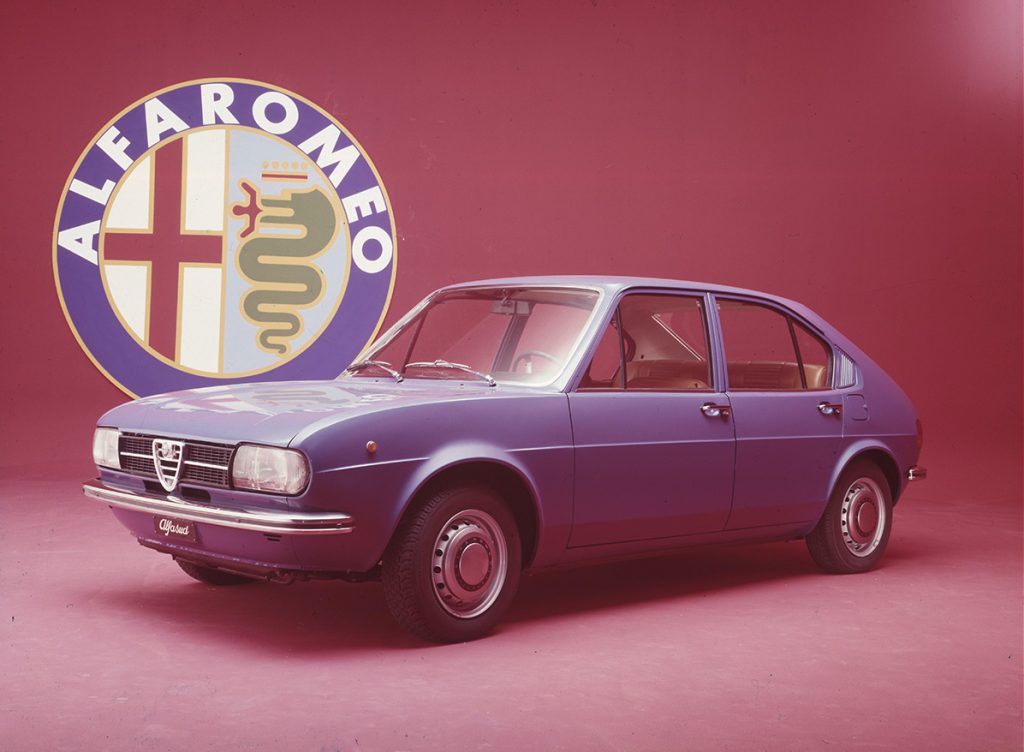
Alfa Romeo could so easily have phoned it in. The Alfasud was a product of circumstance, intended to bring in less well-heeled buyers than Alfas of yore and to fill an employment vacuum in the impoverished south. All it really needed was to be affordable, practical and easy to maintain. In other words, basic transportation.
Instead, the engineers set about creating a front-wheel drive masterpiece, albeit not at the first attempt – the Sud followed the little-known Type 103 of 1960. Like several others here it did much with relatively little – MacPherson struts up front, a beam axle with a Watt’s linkage astern – but use of a flat-four engine kept the centre of gravity low. Weight was relatively low too, even before holes started appearing in the car’s poorly-protected body. The Sud’s handling was enhanced further by inboard brake discs up front, reducing unsprung weight, and contributing further to a surprisingly grown-up ride quality. Early cars – those that are left, anyway – are supposedly the sweetest to drive.
Ford Puma
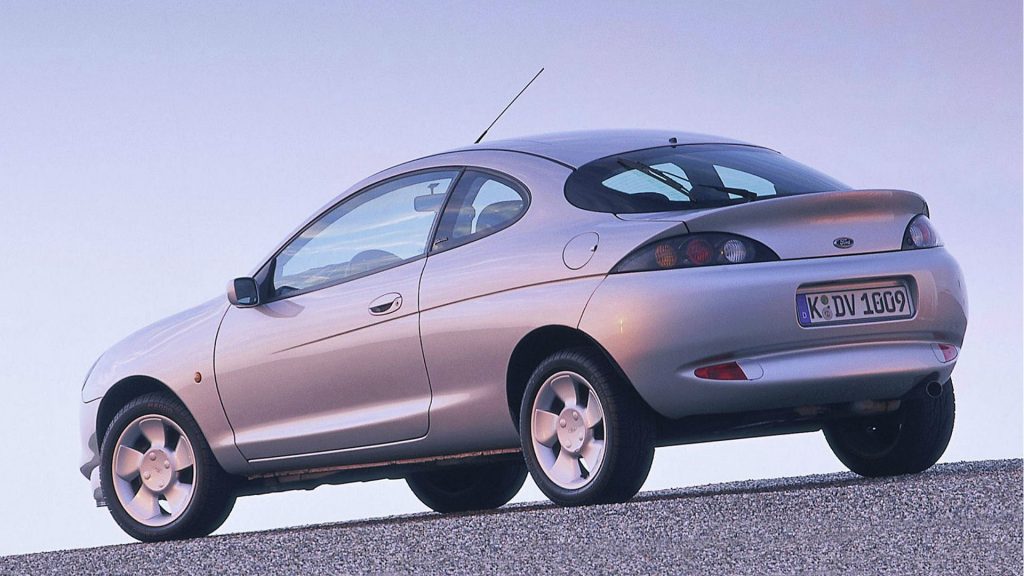
The Ford Puma possibly represents the peak of accessible front-wheel drive handling. The late Richard Parry-Jones was a strong believer that handling went hand-in-hand with safety. So where a Peugeot or Citroen might oversteer when suddenly lifting off in a fast corner, a Ford should do no more than tighten its line – while imparting its intentions to even an average driver.
The Ka, Fiesta, Focus, Mondeo and more did this too, but something about the Puma really hit the spot, doing with simple MacPherson struts and a beam axle what many more sophisticated cars could not. Feedback was never quite to the levels of the French alternatives, but the Puma was nimble, engrossing, and viceless, with excellent body control. In Racing Puma form, it was also monstrously grippy – but also more compromised.
Honda Integra Type-R
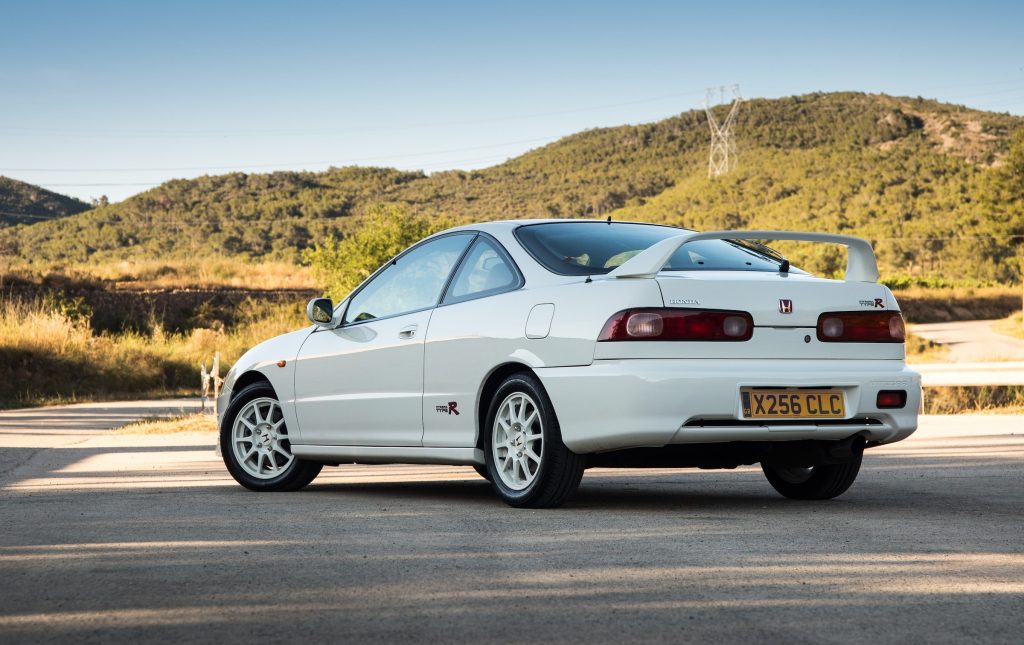
Honda created itself a problem with the Integra Type-R, and one it’s effectively taken the modern FK8-generation Civic Type-R to overcome: It built a car with an absolutely spectacular chassis. Relatively mute, disappointing even at low speeds, the Type-R comes alive as cornering forces rise, for a perfect balance of adjustability, feedback and grip – quite aside from having one of the best naturally-aspirated engines ever put in a car.
The Integra was engineered during perhaps the best period in Honda’s history. As a result, it got the best of everything the brand had to offer: double-wishbone suspension at all four corners for perfect control of geometry, a seam-welded and braced chassis for excellent torsional rigidity (allowing the suspension to do its work unimpeded), and a mechanical limited-slip differential. Rarely do you drive a car where it feels as capable and unflustered by the road surface. There have been quicker front-wheel drive cars, but almost none have been so beautifully honed. evo Magazine once rated it as the greatest-handling front-wheel drive car of all time, and it’s difficult to disagree.
Lancia Fulvia
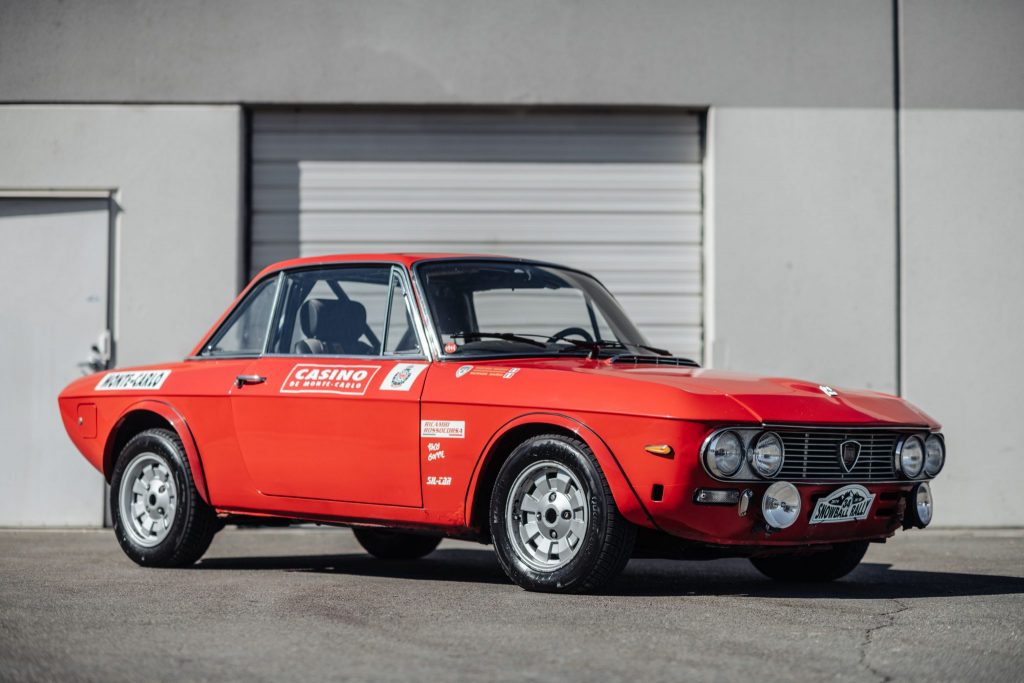
If the Integra Type-R was built during Honda’s purple patch, then the Fulvia was a product of one of Lancia’s many highs, just sneaking in before Fiat’s bean-counters stepped in (admittedly saving the company, but also curtailing Lancia’s laser focus on engineering above all else). Aside from its pretty lines, and the technical intrigue of details like a V4 engine up front, it’s best known for being a front-wheel drive handling milestone.
The layout is unusual by modern standards, with a transverse leaf and wishbones up front, and semi-elliptic leaf springs at the back kept in check by a Panhard rod. But the fundamentals are also good. Fulvias are light, balanced, and the sensibly-geared steering offers chatty feedback and pinpoint precision. Despite modest power (though 79bhp from even the early 1.2 is far from shabby), it was grippy too, allowing the Fulvia to hang on the coat-tails of much more serious machinery on a twisty road. No surprise then it proved adept in rallying and targa events.
Lotus Elan M100
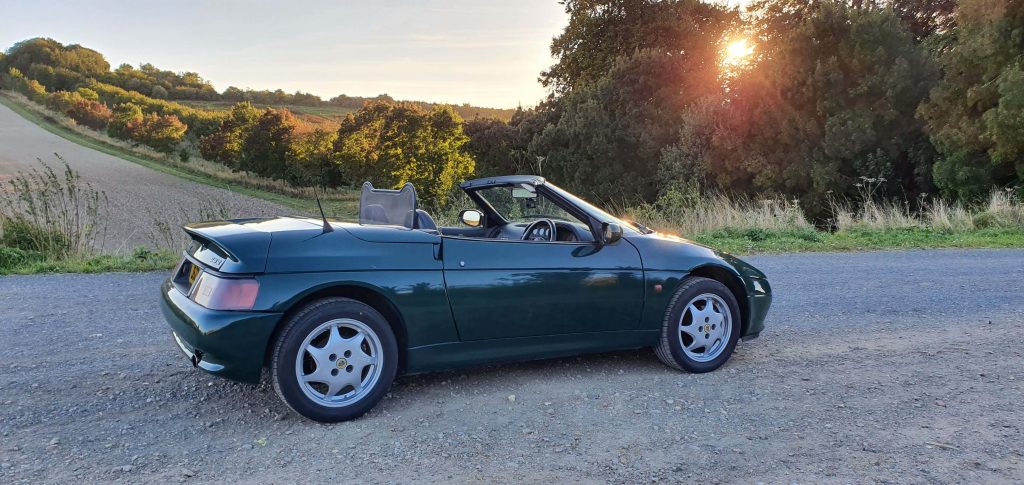
It still seems odd today that Lotus chose to go down the front-wheel drive route with its Elan M100, especially since it wasn’t long before the arrival of the Elise in the mid-1990s, with its more traditional sports car layout of a mid-mounted engine and rear-wheel drive, quickly swept the M100 under the carpet. But Lotus rarely does things by halves, and its only in-house front-wheel drive car (it has of course worked with the layout for automotive clients) is, predictably, considered one of the greats.
What it isn’t, according to reviews both contemporary and more recently, is high on feedback or emotion. Instead, Lotus applied its knowledge to create a car of startling competence: body control and grip are from the top drawer, as is response, while you’d have to be a lunatic to unsettle it. The front-wheel drive roadster may not crack a grin like some others here but there’s not much that could keep up with a well-driven M100.
Mini
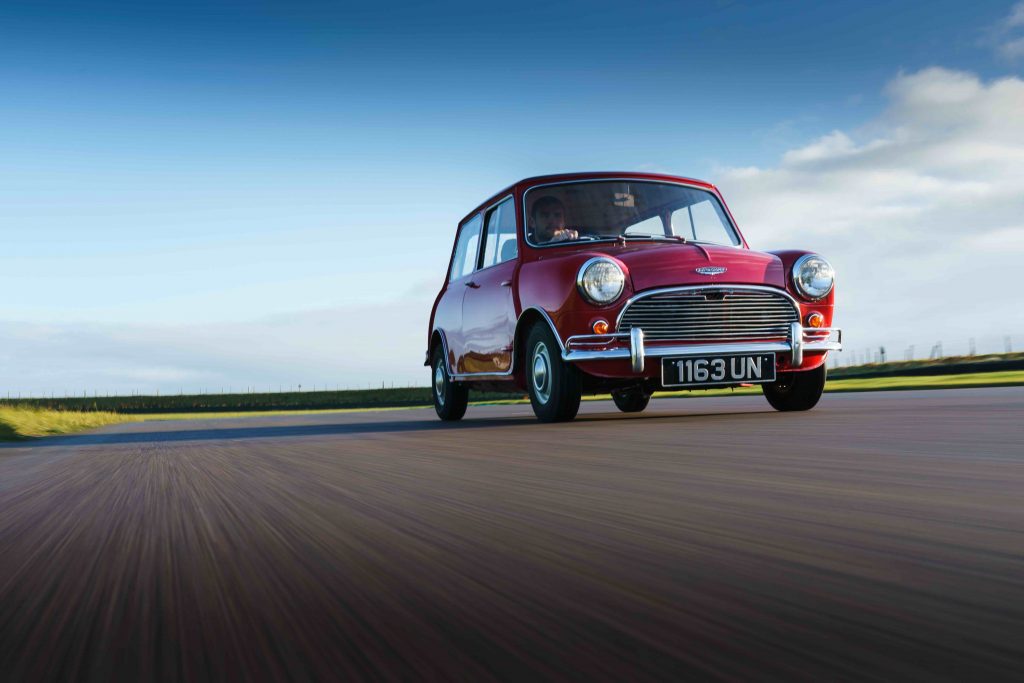
You knew this was going to be here, right? There isn’t a great deal to add to the sum total of discourse on the tiny Issigonis marvel, but drive any Mini built between 1959 and 2000 and you’ll get a taster of the experience that made it a giant-killer on both road and track. They change direction like a swatted wasp, four-wheel drift like you’re Jim Clark, and offer technicolour feedback for every input.
The real beauty is how much they do with so little. Wheels pushed out to the corners gives the Mini a low polar moment of inertia, basically like a mid-engined car. So much so, in fact, that Rauno Aaltonen once told your author that fitting a heavy lamp pod in front of the grille for night stages – effectively, extra weight beyond the wheelbase – made them a second a kilometre slower on the stages. Short wheel travel and rudimentary rubber cone suspension means a firm and bouncy ride, but tight body control and tiny wheels make for minimal steering inertia. An old Mini is still an all-time great.
Peugeot… well, take your pick
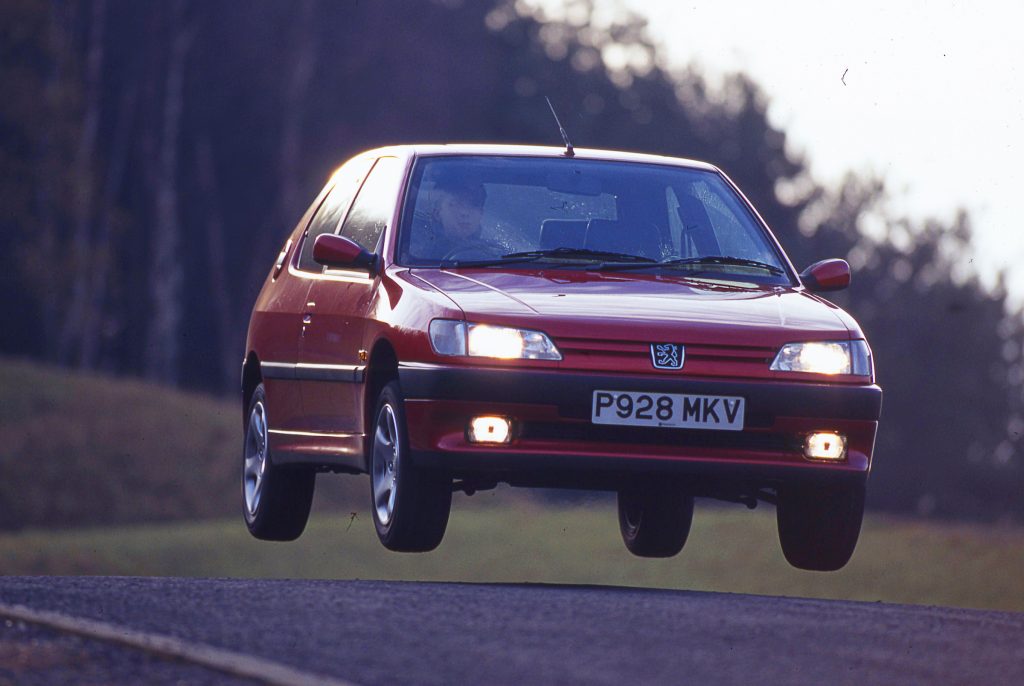
Please, don’t make us choose. If we have to, it’ll be something with a 106, 205 or 306 badge, and probably also appended with the letters “GTi” or a flash of Peugeot-Talbot Sport colours and the word “Rallye”. Selecting the best though is really down to personal preference, but what’s notable is how Peugeot spun off so many spectacular front-drive hatches from a simple struts and torsion beam/trailing arm layout.
For sheer agility and involvement, the hardcore Rallye models probably take it. There was one generation of 205, two generations of 106 Rallye and one 306 for the UK market. GTis offer similar characteristics with greater ability (more grip, more performance) but wider tyres also chip away at their tactility, and make that familiar Peugeot characteristic of lift-off oversteer just a little snappier. Some say the best balanced of all is the humble 205 XS (skinny rubber, a softer ride), but even a basic 1.1-litre shopping version will make a modern supermini feel leaden and uninspired.
Renault Clio 182 Trophy
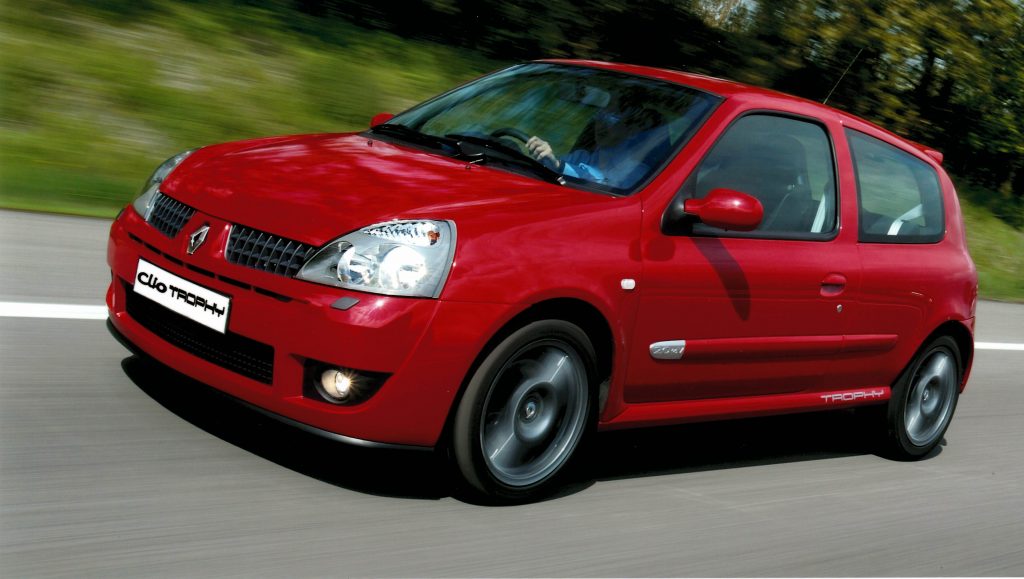
A dilemma: Clio Williams, 182 Trophy, or 200 Cup? Any could take their place here, all are broadly similar in their mechanical makeup, and all had a stranglehold on review scores while on sale. The Williams, on account of its age, is closest to the conventional definition of a classic, and the 200 Cup is perhaps the most capable all-rounder as the newest, so perhaps that leaves the 182 Trophy as a logical combination of the two.
It certainly has the compact feel of the Williams, while offering the modern-day performance of the 200 Cup. But in many ways it’s also the most special. A final fling for the second-generation Clio, Renault Sport’s engineers adorned a fairly conventional suspension arrangement (struts front, twist-beam and trailing arms rear) with top-shelf Sachs remote-reservoir dampers, like you’d find on a racer. In elevating an already enthusiastic, agile and tactile handler with competition car levels of wheel control, Renault created an icon.
Front-wheel drive honourable mentions
Citroen, Peugeot, Renault. For whatever reason, French companies have long known the knack for getting the best from a front-wheel drive chassis. Perhaps it’s because they’ve experimented with it longer than most, Citroen popularising the format with the Traction Avant in the 1930s.
The result though is that in addition to the models mentioned above, each of the major French manufacturers can claim an astonishingly long list of front-drive handling excellence. Citroen’s 2CV and its derivatives roll like ships on the high seas but have excellent roadholding. The later string of hatchbacks, from Visa to Saxo, were as adept as their Peugeot counterparts particularly in sporty form, while performance versions of the larger ZX and Xsara were also impressive.
With Peugeot it’s difficult to know where to start – pick basically anything that isn’t the car you thought of above, but don’t discount larger models like the 405 Mi-16. Renault’s sporty Clios have also been consistently class-leading both before and after the 182 Trophy, while the 5 GT Turbo, larger 19 16v, and of course a string of Renault Sport Meganes (the R26.R being a highlight) would equally deserve a spot here.
Looking further afield and further back in time, the Mini’s larger BMW 1100 and 1300 (ADO16) cousin handled nearly as well as the Mini itself did and rode better, while across the North Sea on the Scandanavian peninsula, the Saab 96 offered surprising balance, particularly with the lighter two-stroke engine used initially.
We’ve written before about all the fun fast Fords that have been built in recent times. When it comes to picking something affordable and fun, the SportKa and Fiesta ST150 are remarkable. Further up the food chain, the original Focus RS is entertainingly lairy.
Then, of course, there are the Golfs. We left them off above because ultimately they’re safe rather than truly entertaining and engaging handlers, but we shouldn’t forget the Mk1 Golf GTI in particular made traditional sports cars of its era feel a bit slovenly. Japan too has had highlights outside of the Integra, such as the four-wheel steer Honda Preludes and the Integra’s closest rival, Mitsubishi’s V6-engined FTO GPX. The P10 and P11 generations of Nissan Primera, and sporty variants of the N15 Nissan Almera (such as the GTi) were also highly accomplished.
And Italy? There’s never quite been anything to top the Fulvia and Alfasud, but the 916-generation Alfa Romeo GTV of the 1990s was more than once compared to the Lotus Elan M100, while for gumball grip and bouncy, Mini-style handling, the Fiat Panda 100HP is a rowdy highlight.
Read more
Renault Clio at 30: Highs and lows of a hot hatch hero
The Honda Accord Type-R is a touring car in streetwear
The Mk8 VW GTI isn’t as good as its predecessor. | Revelations with Jason Cammisa

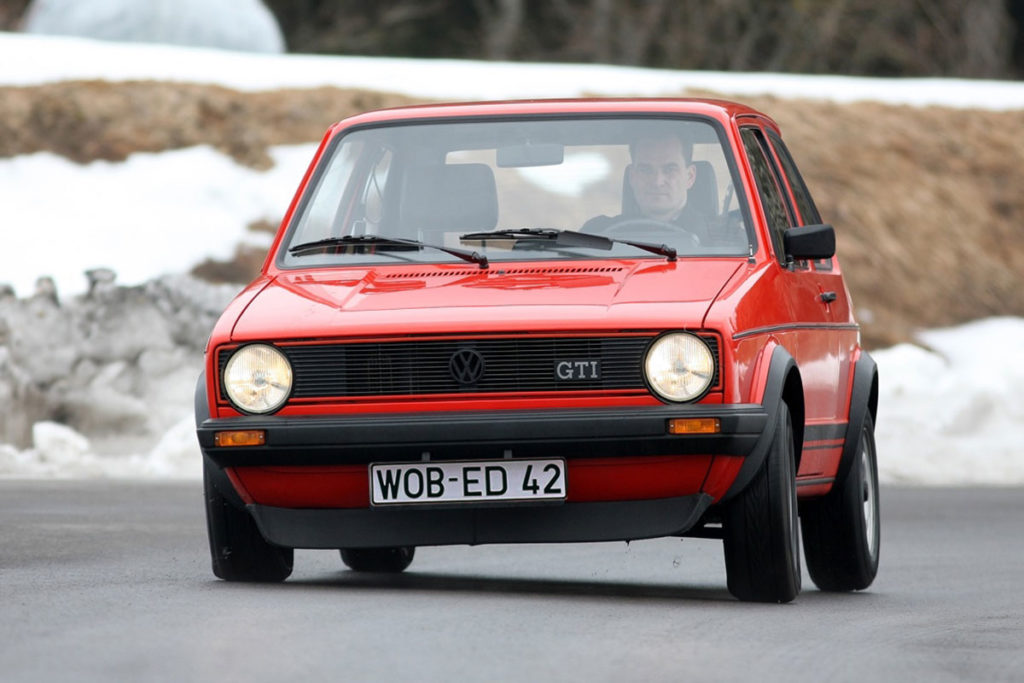
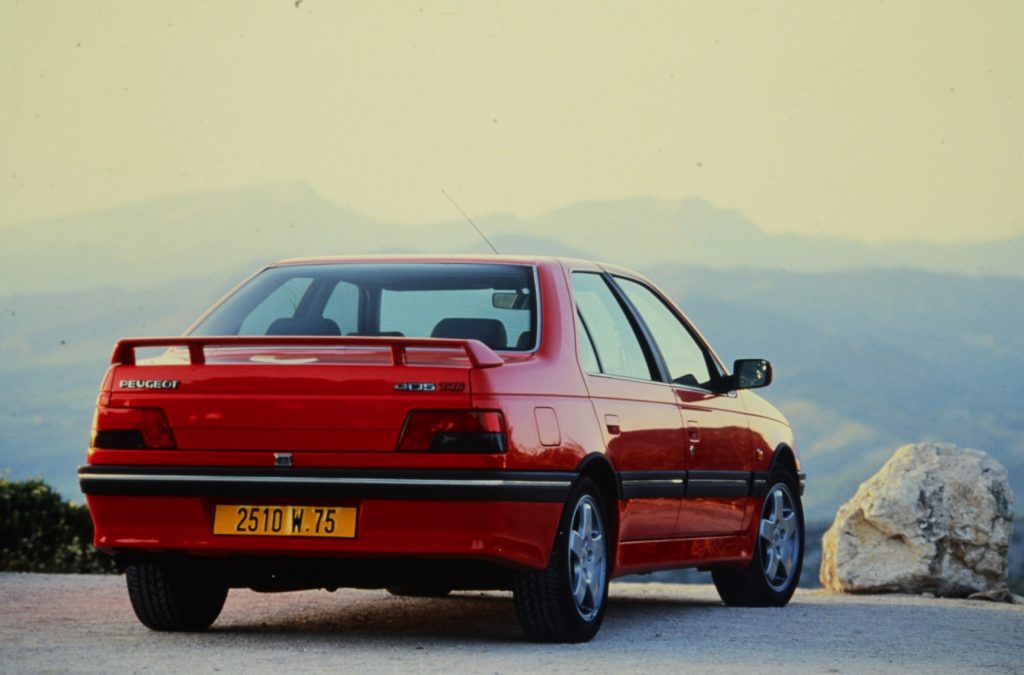
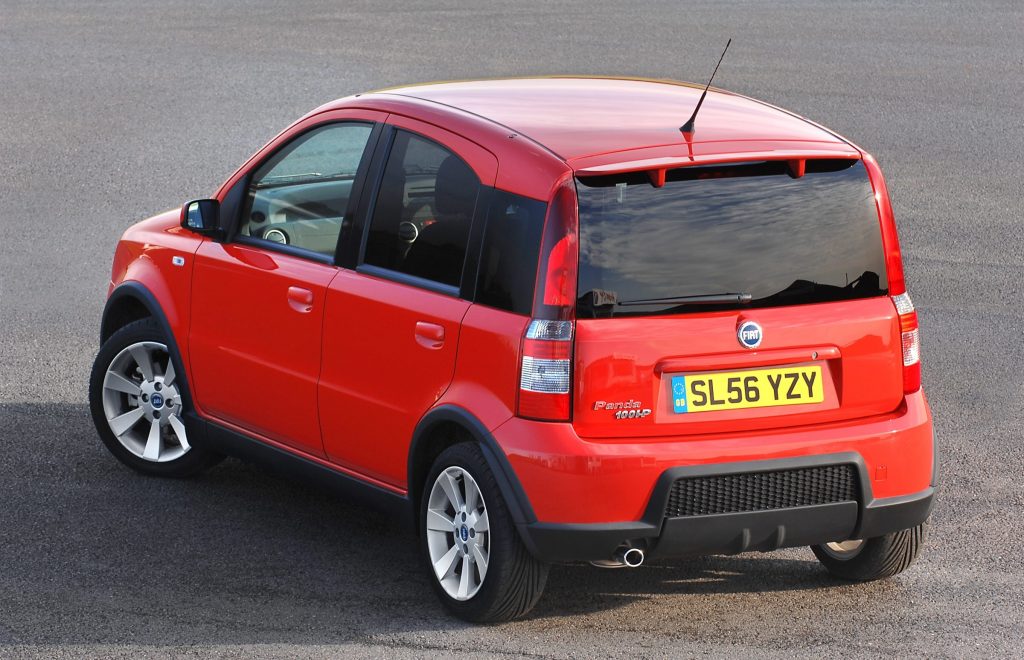

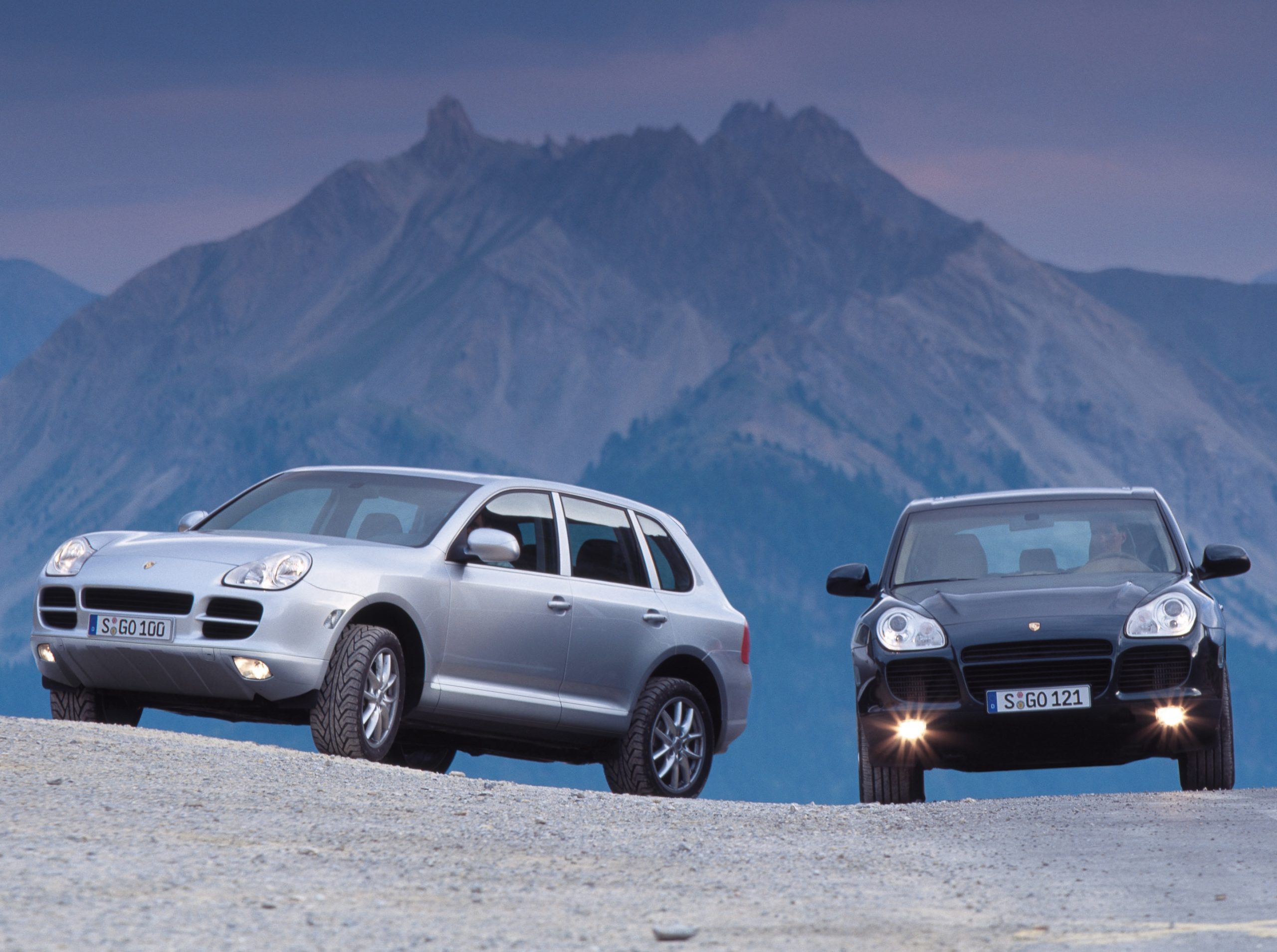
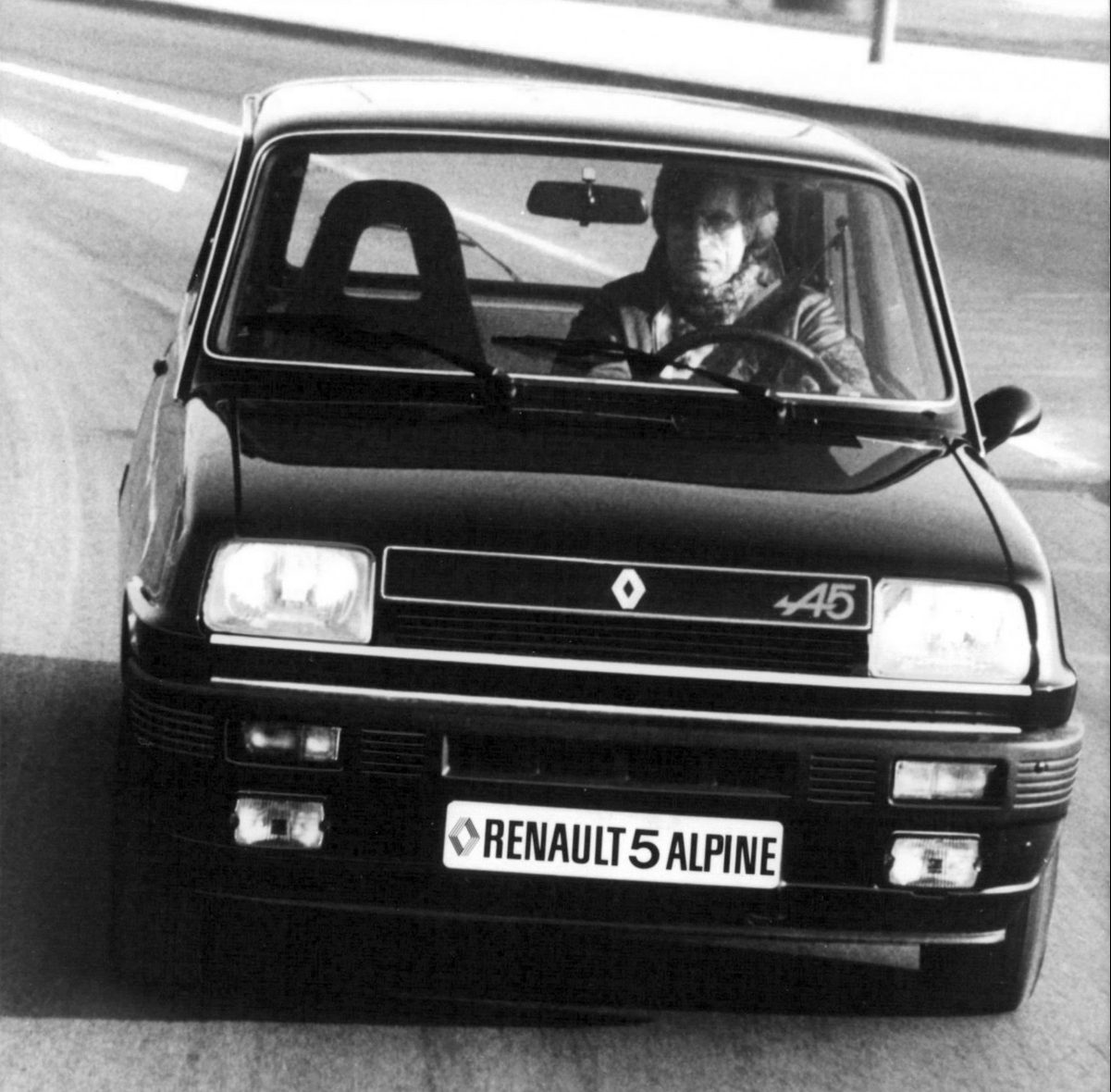






Your list has to include the Nissan Almera GTi. I had one in 96/97 and it was epic, a properly sorted drivers car. Not hugely powerful at 150bhp but the chassis set up was on another level.
Definitely a car that flew beneath the radar of most drivers, Giles. We ran a long-term test Almera GTI, when I worked at one of the car magazines, and you always knew you’d have a great drive over a weekend if you were taking the Almera home. And the TV advert for the car was good fun too!
I believe honourable mention is due to one of the Front WD pioneers, the DKW. A plucky 2-stroke upstart which morphed into Audi through the F(for front wheel drive) pathway. The first “Vorsprung durch Technik”. Right Audi fans?
I can see you have Lancia Fulvia but not the Flavia which I would think should be in as well or even instead of the Fulvia
What about the VW Corrado ? A very capable front wheel drive car with the cracking VR6 engine.
The MG ZS handled brilliantly although the ride was appalling!
Alvis Front Wheel Drive? Citroen Traction Avant?
Some great choices in there,but the Alfa Sud absolutely nails the title of ” The best handling FWD” by a long way.
The throttle off oversteer of almost all the little pugs scared the industry drivers and race schools. Harder to notice on public roads until……
I owned a Renault 5 GT Turbo, well, two actually both from new, an 86 then a 91, both new. Had them 13 years in all.
The grip was great, but the torque-steer was fearsome, they were tiring to drive.
Then I had a 205 GTI 1.9 from 1990. Wonderful turn-in, went exactly where it was pointed, light steering – no PAS – the ultimate grip perhaps not as good as the Renault but even though it was rather knackered by the time I owned it, what a great car.
And no silly electronic gadgets, a car like that will never be repeated.
The Citroen GS 1220 is worth a mention. Almost up to the Alfasud Sprint on a roundabout and tracked perfectly in a straight line.
Old men forget, so I don’t remember its proper designation, but I had the version of the Alfasud tat had prettier bodywork – GT-ish – and it went like a rocket and handled well. . .but torque steer under heavy acceleration from rest could be rather alarming.
Some of the best handling FWD cars I’ve owned include: Renault 21 Turbo, Citroen ZX Volcane, 306GTi-6 and the Renault Twingo GT.
Volvo C30?